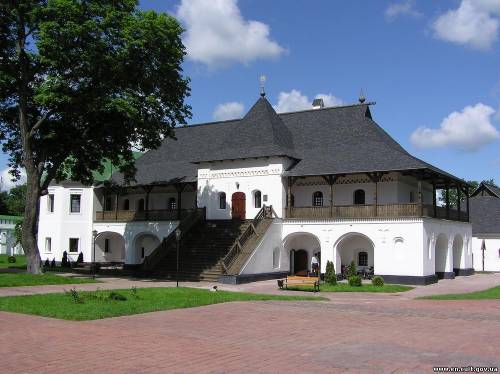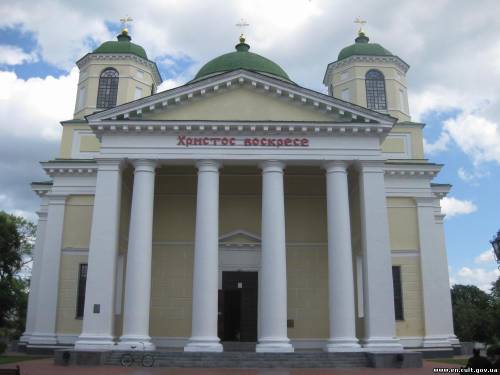
Novgorod-Severskyy is one of the most ancient cities of Kievan Rus period. The first record of it we find in "Edification of Volodymyr Monomakh to his children" in connection with the description of Polovtsian detachment defeat near this city in 1078.
But as archeo-logical finds indicate it was founded as a fortress at the border of Rus at the end of the Xth century.
After Lyubech Congress of Princes in 1097 Novgorod-Siverskyy became the centre of the principality, the history of which is connected with Svyatoslavovych and Davydovych dynasties. At that time the defensive installations of Detinets were erected on the abrupt terrace, rising almost 50 meters over the Desna River. The roundabout city and the trading quarter were formed around it and princes' country estates and villages mentioned in chronicles sprang up.
Life and activity of Prince Igor Svyatoslavych is connected with Novgorod-Siverskyy. In 1185 he carried on the military campaign against Polovtsians and this fact became the theme of "The Song of Igor's Campaign", the famous monument of Old Russian literature.
In 1239 Novgorod-Siverskyy as the most cities of Kievan Rus was seized and destroyed by Baty's hordes. In the next centuries the city belonged to Lithuanian State and Poland, was a part of Nizhyn and Starodub Cossack regiments, and was the centre of Novgorod-Siverskyy region ruled by governor-general. In 1620 it was the first city in Chernihiv region, which was granted the Magdeburg right.
At present almost everywhere in Novgorod-Siverskyy you feel a breath of the remote centuries. The heroic and tragic events glorified in "The Song of Igor's Campaign", are represented by the monuments to Prince Igor, Yaroslavna and Boyan. The Cathedral of the Saviour, built according to the project of G. Quarenghi at the end of the XVIIIth century strikes by its greatness. The Assumption Cathedral had been erected the centuries before. The Mykilska Church, founded in 1764, is a unique work of Ukrainian wooden monumental architecture. The Triumphal Arch and the Commercial Rows of the XVIIIth century impart originality to the city.
There is the former male gymnasia building in the centre of the city; among its graduates: Mykhailo Mak-symovych, a scientist, the first rector of Kyiv University, Panteleimon Kulish, a writer, Kostyantyn Ushynskyy, a teacher, Dmytro Samokvasov, an archeologist, Mykola Kibalchych, the author of the first in the world jet plane project.
The modern four-star hotel "Slovyanskyy" has become the adornment of the city. There is also the museum-reserve "The Song of Igor's Campaign".





























